Submarine
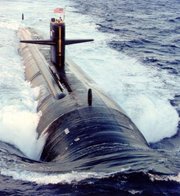
A submarine is a specialized watercraft that can operate underwater. Most major navies employ submarines. Submarines are also used for marine and freshwater science and for work at depths too great for human divers. Another underwater device for use in underwater exploration and salvage is the diving bell.
Nuclear powered submarines and other large submarines are classed as ships, but are customarily referred to by their crews as "boats". The term U-Boat is sometimes used in English, this comes from the German word for submarine, 'U-Boot', itself an abbreviation for Unterseeboot. Modern attack submarines are known as fast attack subs and generally operate in the hunter-killer role. Large subs carrying strategic nuclear missiles are known as boomers.
Submarines encompass one of the largest ranges in capabilities of any vessel. They range from a small two man vessel that can examine the sea floor for few hours, all the way to the largest submarines ever built, the Typhoon class, which can remain submerged for months and carry enough nuclear missiles to destroy hundreds of cities. There are a wide variety of specialized submarines such as rescue submarines like the DSRV or tiny one person human powered subs intended for a competitions between universities.
Density
Submarines are normally used for military or scientific uses. Most submersibles these days are manned but new robotic, remote-controlled submarines are also used. The special thing about submarines is that they can be controlled to either sink or float in water. This is because there are large tanks at the bottom of the submarine known as ‘ballast tanks’. In order for the submarine to sink, water is pumped in through the ballast tanks. This increases the internal density of the submarine. Once the total density is more than the density of water, the craft will be able to submerge into the water. In order for the submersible to rise again, the water in the ballast tanks is pumped out, the density decreases and so, the submarine gains buoyancy. Thus, submarines are able to control their buoyancy by regulating the amount of water in their ballast tanks.
Nonmilitary submarines and submersibles
Non military submarines are usually much smaller than military submarines. Tourist submarines work mainly in tropical resort areas or other areas with clear water and good visibility. In 1996, there were over fifty private submarines operating around the world, serving approximately two million passengers that year. Most of these submarines carried between twenty-five and fifty passengers at a time and sometimes made ten or more dives per day. In design, these submarines borrow mainly from research subs, having large portholes for passengers' viewing and often placing significant mechanical systems outside the hull to conserve interior space. Nonetheless, even aboard tourist submarines the seating can be rather cramped. They are mainly battery-powered and are very slow.
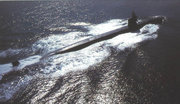
Submersibles
In common usage, "submarine" means a ship which operates above and below the surface, untethered. Underwater vessels with limited mobility, intended to remain in one place during most of their use, such as those used for rescue, research or salvage purposes are usually called "submersibles". Submersibles are typically transported to their area of operation by surface ships or large submarines.
In general, submersibles differ from submarines in that submersibles typically have shorter range, and operate underwater almost exclusively, having little function at the surface. Many submersibles operate on a "tether" or "umbilical", remaining connected to a tender, (a submarine, surface vessel or platform).
A bathysphere or bathyscaphe is a type of submersible which lacks any self-propulsion. A predecessor of the bathysphere, the diving bell, consisted of a chamber, with an open bottom, lowered into the water
A fairly recent development, very small unmanned submersibles called "marine remotely operated vehicles" or MROVs are widely used today to work in water too deep or too dangerous for divers. For example, remotely operated vehicles (ROVs) repair offshore petroleum platforms and attach cables to sunken ships to hoist them. Such remotely operated vehicles are attached by a tether (a thick cable providing power and communications) to control center on a ship. Operators on the ship see video images sent back from the robot and may control its propellers and manipulator arm. The wreck of the Titanic was explored by such a vehicle, as well as by a manned vessel.
Military submarines
There are probably more military submarines in operation than any other type of submarine, though it is difficult to obtain exact figures because navies are secretive about their submarine fleets.
Submarines are useful to a military because they are difficult to locate and, when very deep below the surface, also more difficult to destroy. A great deal of attention in the design of a submarine is devoted to making its travel through the water silent to prevent its detection. As far as short-range attacks are concerned, this also allows them to approach their victim without being detected, then strike at close range.
Modern submarines are usually cigar-shaped. This design, officially called a "teardrop hull", was patterned after the bodies of whales. It significantly decreases the hydrodynamic drag on the sub, allowing the sub to go much faster than earlier designs. USS Albacore was the first vessel to use a teardrop hull. With nuclear power, submarines can remain submerged nearly all of the time, surfacing only rarely. Some generate oxygen for the crew by electrolysis of water.
A raised tower on top of a submarine accommodates the length of the periscope and electronics masts, which can include radio, radar, electronic warfare, and other systems. In many obsolete boat-shaped classes of submarines (see history, below), the Control Room, or "Conn", was located inside this tower, which was known as the "conning tower". Since that time, however, the Conn has been located within the main body of the submarine, and the tower is more commonly called the "sail" today. In another interpretation, "conning tower" comes from the English verb "to con", which means "to navigate", indicating the presence of navigational systems in the conning tower. The Conn should not be confused with the "bridge", which is a small, open platform set into the top of the sail used for visual observation while submarines operate on the surface. There may also be an additional closed platform below this with windows and their wipers for running under conditions of bad weather.
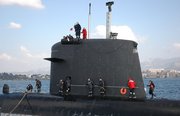
Modern submarines use an Inertial guidance system for navigation while submerged, but drift error build up over time is unavoidable. To counter this, the global positioning system will be occasionally used to obtain an accurate position. The periscope is only used occasionally, since the range of visibility below the sea is short.
A typical nuclear submarine can have a crew of over one hundred; non-nuclear boats typically have less than half as many. Their job is one of the most difficult assignments in the navy, because they must work in isolation for long periods, without much contact with their families, since submarines normally maintain radio silence to avoid detection. Operating a submarine is dangerous, even in peacetime; many submarines have been lost in accidents (see history, below).
Submarines have been in use for a long time, but as technology has improved, their role has changed drastically. The common feature has always been their stealth, cloaked by miles of ocean. Even with modern detection systems, submarines can still travel almost invisibly.
Types of military submarines
Military submarines currently come in three general types: ballistic-missile submarines, guided missile submarines and attack submarines. Currently obsolete are the tactics which called for groups of specialized submarines, such as the squadrons which contained each of the Japanese Types A, B, and C, of which the first two carried scout seaplanes, and which the first type commanded; or the US Navy's hunter-killer teams. Other obsolete types include radar-picket submarines, such as USS Triton; specialized mine-laying ones; and those which carried attack seaplanes, such as the Japanese I-400 class.
Outside these categories may fall the many smaller midget submarines, used for sabotage, espionage and secretive transport. North Korea's submarine fleet, estimated as the fourth-largest in the world in the 1990s, consists largely of smaller vessels. Also outside these categories fall the World War II German milchkuh submarines: submersible supply vessels.
SSBNs
Ballistic missile submarines (or boomers, in American slang) carry submarine-launched ballistic missiles, missiles armed with nuclear weapons, for attacking strategic targets such as cities or missile silos anywhere in the world. They are currently universally nuclear-powered, to provide the greatest stealth and endurance. (The first Soviet ballistic missile submarines were diesel-powered.) They played an important part in Cold War mutual deterrence, as both the United States and the Soviet Union had (or could contend to possess) the ability to conduct a retaliatory strike against the other nation in the event of a first strike. This comprised the strategy of Mutual Assured Destruction.
The U.S. has 18 Ohio class submarines, of which 14 are Trident II SSBNs, each carrying 24 SLBMs. The American George Washington-class "boomers" were named for "famous Americans" and the later Ohio class were named for states, with the exceptions that some of the "famous Americans" were foreigners and SSBN-730 gained the name of a Senator. The first four Ohio class vessels were equipped with Trident I, and are being converted to carry Tomahawk guided missiles instead.
For Russia, see List of NATO reporting names for ballistic missile submarines.
The British Royal Navy possess a single class of four ballistic missile submarines known as the Vanguard class. The Royal Navy's previous ballistic missile submarine class was the Resolution class which also consisted of four boats. The Resolutions, named after battleships to convey the fact they were the new capital ships, were decommissioned upon Vanguard's entering service in the 1990s.
France operates a force de frappe including a nuclear ballistic submarine fleet made up of one SSBN Redoutable class and three SSBNs of the Triomphant class. One additional SSBN of the Triomphant class is under construction.
The People's Republic of China's People's Liberation Army Navy's SLBM inventory is relatively new. China launched its first nuclear armed submarine in April 1981. The PLAN currently has 5 Hans at 5,000 tons displacement and 1 Xia at roughly 8,000 tons displacement. The Type 91 is outfitted with 6 SLBM launching tubes and the Type 92 is equipped with 12. China's SLBM program is built around its JL-1 inventory. The Chinese Navy is estimated to have 24 JL-1s. The JL-1 is basically a modified DF-21.
The PLAN plans to replace its JL-1 with an unspecified number of the longer ranged, more modern JL-2s. Deployment on the JL-2 reportedly began in late 2003.
Attack boats
Submarines designed for the purpose of attacking merchant ships or other warships are known as "fast attacks", "hunter-killers", "fast boats", or "fleet submarines". They typically carry torpedoes for attacking naval vessels, SUBROCs for attacking distant submarines, and today they generally carry cruise missiles for attacking land-based targets or shipping. On American submarines, cruise missiles can be fired horizontally through a submarine's torpedo tubes, or, on newer vessels, via specially designed vertical launching cells. The former has a drawback of reducing the available torpedoes a submarine can carry, while the latter has the drawback of only being able to be reloaded by a submarine tender or by returning to port. The Soviet Navy also developed several types of missile attack submarine, which carried a heavy load of antisurface missiles, at a time when most attack submarines used torpedoes only.
Attack submarines use a much wider variety of propulsion systems. The majority use the same diesel-electric combination developed early in the 20th century, many use nuclear power, and a growing number use some other form of air-independent propulsion such as fuel cells or Stirling engines. All of the attack submarines of the United States use nuclear power.
All American attack submarines (that had actual names rather than just alphanumeric designators) were named for "denizens of the deep" until the Los Angeles class, which are named for cities—with the exceptions of a few named for politicians, the Seawolf class, which received the traditional name for the first, a state name for the second and a Presidential name for the third (and last), and now the Virginia class, where the first six are named after states.
Until the 1980s, Russian attack submarines were designed around the concept of Anti-Surface Warfare so they tended to be fast and noisy. Due to well-placed spies Russia learned that NATO naval forces could track them quite easily and redesigned their submarines in to quieter "Hunter Killers". The Victor III was the first class of Russian submarine to be built with this new mentality, armed with torpedoes, subrocs, cruise and supersonic missiles they posed a significant threat to NATO sea power. Today Russian Akula, Sierra, and Graney class submarines continue its design and are respected as some of the finest submarines in the world.
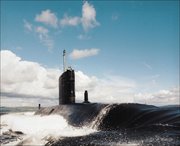
Just before the 1990s, the Royal Navy consisted of diesel and nuclear powered submarines but, due to the end of the Cold War, defense cuts saw the RN submarine fleet became all-nuclear, presently consisting of the Swiftsure and Trafalgar class submarines, the latter named after the Battle of Trafalgar. The boats are armed with torpedoes, Harpoon anti-ship missiles and many are now armed with the Tomahawk cruise missile, which is fired from their torpedo tubes. The RN intends to have all of its attack submarines armed with the Tomahawk by 2008. During the Kosovo War, HMS Splendid became the first RN submarine to fire a Tomahawk in anger. The expected replacement of those classes is the Astute-class submarine, but delays have seen the expected launch of the first A class, HMS Astute, moved to 2009. Royal Navy submarines classes, including ballistic missile submarines, are letter-based; thus, all boats of the Swiftsure class begin with the letter S and the Trafalgars, the letter T. Though this has been the way with all Royal Navy submarines, they were originally designated alphanumerically, such as HMS A1 of the A-class of 1903.
Today the role of these Attack boats has changed considerably since the end of the Cold War. U.S. fast boats no longer prowl the deep oceans in the hunt for the elusive Soviet, instead their job today is that of providing cruise missile support, early warning and intelligence gathering, harbor mine clearing, Special Operation Warfare team delivery, and others. The Virginia class was specifically designed for this multiple-mission capability in mind.
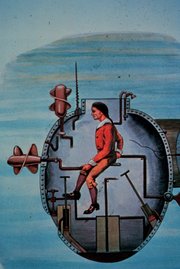
History of submarines
Prehistory of submarines and the first submersibles
A far ancestor for a submarine is probably a 17th century Ukrainian Cossack riverboat called chaika that was used underwater for reconnaissance and infiltration missions. Chaika could be easily capsized and submerged so that the crew was able to breathe underneath (like in modern diving bell) and propel the vessel by walking on the bottom of river. Special plummets (for submerging) and pipes for additional breathing have been used.
The first submersible for which there is reliable information that it was really built, is the one constructed in 1620 by Cornelius Jacobszoon Drebbel, a Dutchman in the service of James I. It was propelled by means of oars. The precise nature of the type is a matter of some controversy, some claiming it was merely a bell towed by a boat. There were two improved types, tested below the surface of the Thames between 1620 and 1624.
Though the first submersible vehicles were tools for exploring under water, it did not take long for inventors to recognize their military potential. The strategic advantages of submarines were set out by Bishop John Wilkins of Chester in Mathematicall Magick in 1648.
- Tis private: a man may thus go to any coast in the world invisibly, without discovery or prevented in his journey.
- Tis safe, from the uncertainty of Tides, and the violence of Tempests, which do never move the sea above five or six paces deep. From Pirates and Robbers which do so infest other voyages; from ice and great frost, which do so much endanger the passages towards the Poles.
- It may be of great advantages against a Navy of enemies, who by this may be undermined in the water and blown up.
- It may be of special use for the relief of any place besieged by water, to convey unto them invisible supplies; and so likewisefor the surprisal of any place that is accessible by water.
- It may be of unspeakable benefit for submarine experiments.
The first military submarine
The first military submarine was the Turtle, a hand-powered spherical contraption designed by the American David Bushnell that was designed to accommodate a single man. It was the first verified submarine, capable of independent underwater operation and movement, and the first to use screws for propulsion. During the American Revolutionary War, Turtle attempted and failed to sink a British warship, HMS Eagle in New York harbor on September 7, 1776.
In 1800, Robert Fulton demonstrated to the French, and then to the British, how to destroy ships with his human-powered submarine Nautilus using a mine, but none of the governments showed any interest.

During the War of 1812, in 1814 Silas Halsey lost his life while using a submarine in unsuccessful attack on a British warship stationed in New London harbor.
Submarines in the American Civil War
During the American Civil War, the Union was the first to field a submarine. Alligator was the first U.S. Navy sub and the first sub to feature compressed air and an air filtration system. She was the first submarine to carry a diver lock which allowed a diver to exit to plant electrically-detonated mines on enemy ships. Initially powered by oars, she was later converted to a screw-propeller. With a crew of 20, she was larger than Confederate submarines. Alligator was 47 feet (14.3 meters) long and about 4 feet (1.2 meters) in diameter. She was lost in a storm off Cape Hatteras on April 1, 1863 while uncrewed and under tow to her first combat deployment at Charleston.
The Confederate States of America fielded several human-powered submarines including CSS Hunley. The first Confederate submarine was the 30-foot long Pioneer which sank a target schooner using a towed mine during tests on Lake Pontchartrain but she was not used in combat. She was scuttled after New Orleans was captured and in 1868 was sold for scrap.
CSS Hunley was used for attacking the North's ships, which were blockading the South's seaports. The submarine had a long pole on the front, upon which was attached an explosive charge. The sub was to sneak up to an enemy vessel, attach the explosive, move away, and then detonate. It was extremely hazardous to operate, and had no air supply other than what was contained inside the main compartment. On two occasions, the sub sank; on the first occasion half the crew died and on the second, the entire eight-man crew perished. On February 18, 1864 Hunley sank USS Housatonic in the Charleston Harbor, the first time a submarine successfully sank another ship, though she sunk in the same engagement shortly after signaling her success. Another Confederate submarine was lost on her maiden voyage in Lake Pontchartrain; she was found washed ashore in the 1870s and is now on display at the Louisiana State Museum. Submarines did not have a major impact on the outcome of the war, but they did portend their coming importance to naval warfare and increased interest in their use in naval warfare.
Developments in Submarines in the late 1800s
The first mechanically powered submarine was the peroxide driven Ictineo II, launched in 1864 by NarcÃs Monturiol. This submarine was originally built to ease the harvest of coral.
In 1870, writer Jules Verne published the science fiction classic 20,000 Leagues under the Sea, which concerns the adventures of a maverick inventor in Nautilus, a submarine more advanced than any that existed at that time. The fictional story inspired inventors to build more advanced submarines.
In 1879, a Manchester curate, the Reverend George Garrett built the steam-powered 'Resurgam' at Birkenhead. Garrett intended to demonstrate the 12 meter long vehicle to the British Navy at Portsmouth, but had mechanical problems, and while under tow the submarine was flooded and sank off North Wales.
The first submarine built in series, however, was human-powered. It was the submarine of the Polish inventor Stefan Drzewiecki—50 units were built in 1881 for Russian government. In 1884 the same inventor built an electric-powered submarine. In 1899, the French steam and electric submarine Narval introduced the classic twin-hull design, with an inner hull inside an outer hull.
The Irish inventor John Holland had better luck, and designed and built several quite successful gasoline- and electric powered submarines. Some of his vessels were purchased by the United States, the United Kingdom, the Imperial Russian Navy, and Japan, and commissioned into their navies.
The Spanish inventor Isaac Peral built a practical submarine in 1888, but despite of the success of the trials, the Spanish Navy scrapped the project.
Some submarines were also designed and built in France in the 1890s.
Many more submarines were built subsequently by various inventors, but they were not to become effective weapons until the 20th century.
Late 1800s to World War I
The turn of century era marked a pivotal time in the development of submarines, with a number of important technologies making their debut, as well as the widespread adoption and fielding of submarines by a number of nations. Diesel electric propulsion would become the dominant power system and things such as the periscope would become standardized. Large numbers of experiments were done by countries on effective tactics and weapons for submarines, all of which would culminate in them making a large impact on coming World War I.
In 1895, John Holland designed submarines that, for the first time, made use of internal combustion engine power on the surface and electric battery power for submerged operations. In 1902, Holland received U.S. Patent 708553. The French submarine Aigette in 1904 further improved the concept by using a diesel rather than a gasoline engine for surface power.
Submarines during the World Wars
The first time military submarines had significant impact on a war was in World War I. Forces such as the U-boats of Germany saw action in the First Battle of the Atlantic. The U-boats' ability to function as practical war machines relied on new tactics, their numbers, and submarine technologies such as combination diesel/electric power system that had been developed in the preceding years. More like submersible ships than the submarines of today, U-boats operated primarily on the surface using regular engines, submerging occasionally to attack under battery power. They were roughly triangular in cross-section, with a distinct keel, to control rolling while surfaced, and a distinct bow. The sinking of the ocean liner RMS Lusitania by a U-boat was a major factor in bringing the United States of America into the war.
Germany again put submarines to devastating effect in the Second Battle of the Atlantic in World War II, such as attempting but ultimately failing to cut of Britain's supply routes. Although the U-boats had been updated in the intervening years, the major innovation was improved communications, facilitated with the famous Enigma cypher machine. This allowed for mass-attack tactics in what popularly became known as a "wolf pack", although the German term, Rudel, did not specify wolves. After putting to sea, the U-boats could be quickly amassed into a formidable striking force. Germany attempted to maintain a blockade against the United Kingdom, a nation reliant on imports for food and industry. Winston Churchill wrote that the U-boat threat was the only thing that ever gave him cause to doubt the Allies' eventual victory.
During World War II, the Japanese intended their submarines to be scouts. The submarines were fast, large, could operate over 100 days and many carried an aircraft with them. However, early models were not very maneuverable under water, could not dive very deep, and lacked radar. (Later in the war units that were fitted with radar were in some instances sunk due to the ability of US radar sets to detect their emissions. For example, Batfish (SS-310) sunk three such equipped submarines in the span of four days.) By the end of the war, the submarines were instead being used to transport supplies to island garrisons.
Meanwhile the US used their submarines to attack merchant shipping, their submarines destroying more Japanese shipping than all other weapons combined. While the British and Japanese also fielded attack submarines, they were used in fleet actions where they were somewhat ineffective due to their low speeds.
Diesel-fuelled submarines needed air to run their diesel engines, thus they carried very large batteries for submerged travel. These batteries limited the speed and range of the submarines while submerged. The schnorkel was used to allow German submarines to run just under the surface, attempting to avoid detection visually and by radar. The German navy experimented with engines that would carry hydrogen peroxide to allow diesel fuel to be used while submerged, but technical difficulties made this infeasible. On the other side, the Allies experimented with a variety of detection systems, including chemical sensors to "smell" the exhaust of submarines.
Modern submarines
In the 1950s, nuclear power partially replaced diesel-electric propulsion in those nations with access to nuclear technology. Equipment was also developed to extract oxygen from sea water. These two innovations gave submarines so equipped the ability to remain submerged for weeks or months, and enabled previously impossible voyages such as USS Nautilus's crossing of the North pole beneath the Arctic ice cap in 1958. Most of the naval submarines built since that time in the United States and the Soviet Union/Russia have been powered by nuclear fission reactors. Use of nuclear power instead of fossil fuel enables submarines to travel around the world submerged and essentially hidden for months at a time. The most limiting factors in the length of time staying submerged now are food supply and willingness of the crew to remain in the space-limited submarine.
While the greater endurance and performance from nuclear reactors mean that nuclear submarines are the norm, conventional diesel-electric submarines have continued to be produced by both nuclear and non-nuclear powers. Conventional submarines are cheaper to build. When running on batteries they are often quieter than nuclear submarines, giving a tactical advantage.
During the Cold War, the United States of America and the Soviet Union maintained large submarine fleets that engaged in cat-and-mouse games; Russia continues this tradition today. The Soviet Union suffered the loss of at least four submarines during this period: K-129 was lost in 1968, K 8 in 1970, K -219 in 1986, and Komsomolets (the only Mike class submarine) in 1989 (which held a depth record among the military submarines—1000 m). Many other Soviet subs, such as K-19 were badly damaged by fire or radiation leaks. The United States lost two nuclear submarines during this time: USS Thresher and Scorpion.
The United Kingdom employed nuclear-powered submarines against Argentina in 1982 during the two nations' dispute over the Falkland Islands. The sinking of the antiquated cruiser ARA General Belgrano by HMS Conqueror was the first sinking by a nuclear-powered submarine in wartime.
Major submarine incidents since 2000
Main Article: Major submarine incidents since 2000
Since submarines have been actively deployed, there have been several incidents involving submarines which were not part of major combat. Most of these incidents were during the Cold War, but some are more recent. Since the year 2000 there have been 7 major naval incidents involving submarines. There were two Russian submarine incidents, and in both cases the submarines in question were lost, along with three United States submarine incidents, one Chinese incident, and one Canadian incident.
Submarine propulsion
Until the advent of nuclear marine propulsion, most 20th century submarines used batteries for running underwater and gasoline (petrol) or diesel engines on the surface and to recharge the batteries. Early boats used gasoline but this quickly gave way to diesel because of the greatly reduced flammability of diesel. The diesel-electric submarine became the standard means of propulsion. Initially the diesel or gasoline engine and the electric motor were on the same shaft which also drove a propeller with clutches between each of them. This allowed the engine to drive the electric motor as a generator to recharge the batteries and also propel the submarine if required. The clutch between the motor and the engine would be disengaged when the boat dived so that the motor could be used to turn the propeller. The motor could have more than one armature on the shaft — these would be electrically coupled in series for slow speed and parallel for high speed (known as "group down" and "group up" respectively).
In the 1930s the principle was modified for some submarines designs, particularly those of the U.S. Navy and the British U-class. The engine was no longer attached to the motor/propeller drive shaft but drove a separate generator which would drive the motors on the surface and/or recharge the batteries. This allowed much more flexibility, for example the submarine could travel slowly on the surface whilst the engines were running at full power to recharge the batteries as quickly as possible. Despite this flexibility, battery/diesel submarines are required to surface frequently to recharge the batteries, as the diesel engines require oxygen from the atmosphere.
There were other power sources tried—oil-fired steam turbines powered the British "K" class submarines built during the First World War and in following years but these were not very successful. This was selected to give them the necessary surface speed to keep up with the British battle fleet.
Steam power was resurrected in the 1950s with the advent of the nuclear-powered steam turbine driving a generator which is now used in all large submarines. By removing the requirement for atmospheric oxygen these submarines can stay submerged indefinitely so long as food supplies remain (air is recycled and water distilled from the ocean). These vessels nevertheless always have a small battery and diesel engine/generator installation for emergency use should the reactor have to be shut down.
Anaerobic propulsion was employed by the first mechanically driven submarine Ictineo II in 1864. Ictineo's engine used a chemical mix containing a peroxide compound, that generated heat for steam propulsion while at the same time solved the problem of oxygen renovation in an hermetic container for breathing purposes. The system wasn't employed again until 1940 when the German Navy tested a system employing the same principles, the Walter turbine, on the experimental V.80 submarine and later on the naval U.791 submarines. At the end of the Second World War the British and Russians experimented with Hydrogen Peroxide/Kerosine engines which could be used both above and below the surface. The results were not encouraging enough for this technique to be adopted at the time, although the Russians deployed a class of submarines with this engine type code named Quebec by NATO, they were considered a failure. Today several navies, notably Sweden now use air-independent propulsion boats which substitute liquid oxygen for hydrogen peroxide.
Most small modern commercial submarines which are not expected to operate independently just use batteries which can be recharged by a mother-ship following every dive.
An experimental propulsion system for submarines is the Magnetohydrodynamic drive which has no moving parts and would be extremely quiet, ideal for military use. This system was popularized in the book (and subsequent movie), The Hunt for Red October, written by Tom Clancy. However, although surface ships have been built with this propulsion system, no known submarine yet uses it.

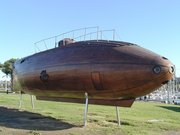
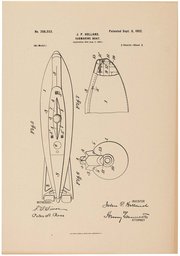
.jpg)